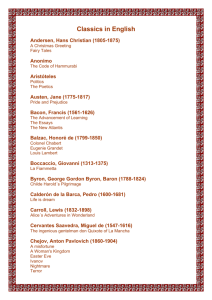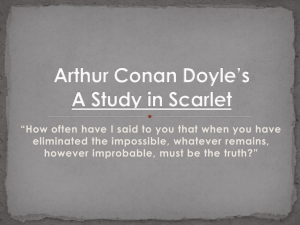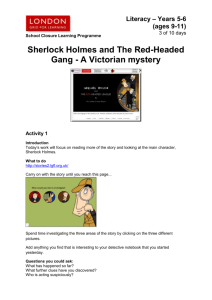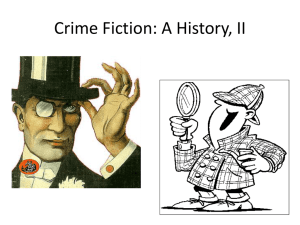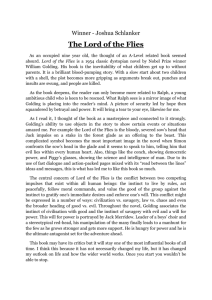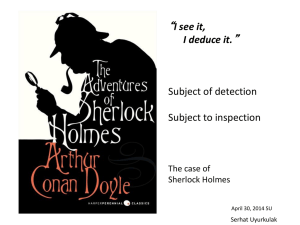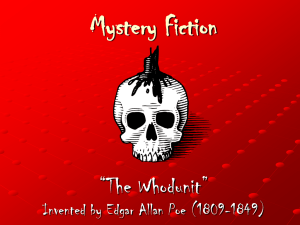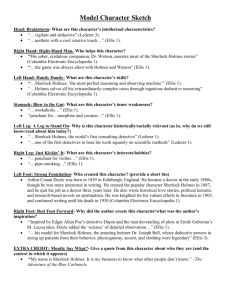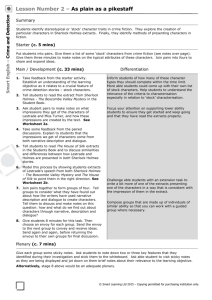An Analysis of Whole Art of Detection
advertisement
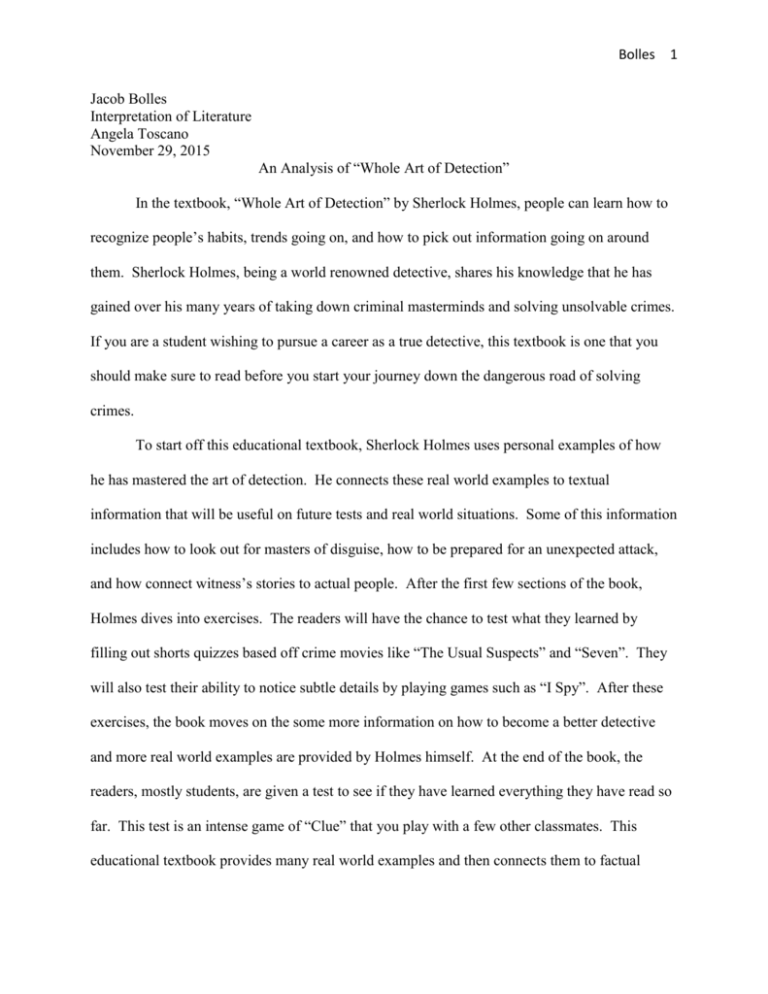
Bolles 1 Jacob Bolles Interpretation of Literature Angela Toscano November 29, 2015 An Analysis of “Whole Art of Detection” In the textbook, “Whole Art of Detection” by Sherlock Holmes, people can learn how to recognize people’s habits, trends going on, and how to pick out information going on around them. Sherlock Holmes, being a world renowned detective, shares his knowledge that he has gained over his many years of taking down criminal masterminds and solving unsolvable crimes. If you are a student wishing to pursue a career as a true detective, this textbook is one that you should make sure to read before you start your journey down the dangerous road of solving crimes. To start off this educational textbook, Sherlock Holmes uses personal examples of how he has mastered the art of detection. He connects these real world examples to textual information that will be useful on future tests and real world situations. Some of this information includes how to look out for masters of disguise, how to be prepared for an unexpected attack, and how connect witness’s stories to actual people. After the first few sections of the book, Holmes dives into exercises. The readers will have the chance to test what they learned by filling out shorts quizzes based off crime movies like “The Usual Suspects” and “Seven”. They will also test their ability to notice subtle details by playing games such as “I Spy”. After these exercises, the book moves on the some more information on how to become a better detective and more real world examples are provided by Holmes himself. At the end of the book, the readers, mostly students, are given a test to see if they have learned everything they have read so far. This test is an intense game of “Clue” that you play with a few other classmates. This educational textbook provides many real world examples and then connects them to factual Bolles 2 information. Students start off with these examples and then have the opportunity to take quizzes and tests in order to test their knowledge on the art of detection. After reading “Whole Art of Detection”, I felt that I could be nearly as good of a detective as Sherlock Holmes himself. The book does a fantastic job of connecting to its audience, primarily students. The use of real world examples makes all the difference when trying to obtain such detailed information at such a high level. Also, the information itself is solid. There is a great balance of advanced terminology along with basic concepts that makes learning challenging but doable. Getting the opportunity to test my knowledge on quizzes and being able to play “I Spy” made the real difference. These things truly test the readers and makes sure they have what it takes in order to be a detective. One negative aspect that I have about this book is its final test. The game of “Clue” is a solid choice when it comes to testing student’s skills and knowledge, but I believe a more believable game, such as “Guess Who” would be a better indicator of a student’s detection skills as a whole. None the less, this textbook by Sherlock Holmes does a masterful job teaching young, soon to be detectives the art of detection through detailed examples, extensive knowledge, and challenging tests. The book “Whole Art of Detection” by Sherlock Holmes is an educational textbook written for students who dream to become future detectives like Holmes himself. Holmes uses an abundance of true stories to teach his readers about the art of detection. After reading this textbook, you should be better at spotting trends, recognizing habits, and picking up on information. This book is intended for students by anyone who reads it can benefit due to the great information and useful tests. I would recommend this book to anyone is interested in becoming a world class detective like Sherlock Holmes. Bolles 3 Work Cited Holmes, Sherlock. Whole Art of Detection. London. Phantom House, Inc. 1901. Text.
